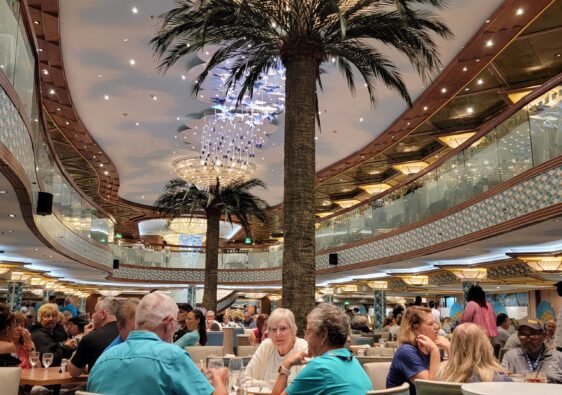When it comes to cruising, many things come to mind. There’s the non-stop entertainment, the world class cuisine, endless buffets, one-of-a-kind hand-crafted cocktails, port shopping demonstrations, and unforgettable shore excursions. Whether on board ship or on land, there’s one part of the cruising experience which the adult crowd cannot get enough of. When it comes to adults and cruising, there’s never enough duty-free shopping. Specifically, adults cannot get a bigger attraction for duty-free alcohol. The most popular alcoholic product sold on board ship and at ports-of-call is duty-free rum. Without rum, such famous alcoholic drinks would not be possible. There’s the Rum Sizzle, Dark and Stormy, and the savory Pina Colada. Undoubtedly, duty-free rum is the most sought-after product during any voyage. Before cruisers make their traveling plans, or specifically, write out their duty-free shopping list, they must be mindful of the restrictions they’re up against. When purchasing duty-free rum, they must do so with a forethought. Such restrictions lead cruisers to carefully deciding what and what not to do once they purchase duty-free rum. Once cruisers learn about these restrictions, they’ll discover the living ‘proof’ to shopping wisely on the high seas.
3) Six bottles per guest: Shopping for duty-free alcohol can be an exciting activity and a once-in-a-lifetime experience. Above that, shopping for duty-free rum does come with with restrictions. Guests must remember that duty-free rum can only be purchased at a limit of six bottles per guest. Six bottles is the magic number. The duty-free shop staff is responsible for advising guests on this restriction. No matter how many bottles of whichever rum guests wish to purchase, they’re limited to six bottles. No matter how it’s consumed, whether straight up, or in a famous drink, six bottles per guest is the threshold guests must not break. When it comes to clearing customs, the limit of six bottles per guest is enforced. U.S. Customs (CBP) imposes a duty payment for guests who exceed the limit. Guests often question the restriction. The limit is the limit.
2) 90 proof only: Cruisers, particularly novice and minimally experienced, don’t realize that there’s a restriction on what type of rum they are allowed to purchase while on their voyage. Whether on board or at ports-of-call, guests must commit to memory another magic number-90. 90 proof is the limit type of rum guests must adhere to. 90 proof rum, regardless of brand, is safe for transportation. 90 proof rum poses a very low risk of flammability. 90 proof is the most popular type of rum purchased by cruisers. The one category of rum which guests must be aware of the restrictions is 151 proof. 151 proof rum is used in the famous drink, Pina Colada. 151 proof rum is also the chief ingredient in other popular drinks such as the Zombie, Rum Runner, and the Dark and Stormy. 151 proof rum may be an important ingredient, but it is a no-go for air transportation. 151 proof rum is flammable, therefore it’s prohibited from being carried in any type of luggage. Does anyone need ‘proof’ now?
1) Surface transportation only: Should any guests purchase duty-free rum at 90 proof, they are in good shape. There’s no imminent danger. When it comes to flying home from their port city, there’s nothing to worry about. Guests must be well-aware of the biggest of restrictions with regards to transporting 151 proof rum. Should guests plan to purchase 151 proof rum, they must do their homework prior to cruising. How are they going to travel to and from their port city? If 151 proof rum is on their duty-free shopping list, guests must use surface transportation only. Surface transportation refers to a train, bus, car, limousine, or a ride share vehicle (i.e. Uber and Lyft). If guests are sailing out of port cities such as Tampa, Ft. Lauderdale, Miami, Baltimore, or Boston, they must consider taking the train. Should guests be sailing out of ports such as New York City (Manhattan or Brooklyn) or Cape Liberty (Bayonne, NJ), it is perfectly safe to purchase 151 proof rum. A vast majority of cruisers who sail out of the New York area often use surface transportation. 151 proof rum has no place in the skies. Guests who take surface transportation to their port city are in great shape. Guests don’t need any more ‘proof’ than that.
Cruising, no matter what the itinerary, is the ultimate traveling experience. While on board, guests are known to spend plenty of time at the bars, in the clubs, the specialty restaurants, and at the buffets. Yes, they’re definitely going to spend a significant amount of time catching up on their duty-free shopping. When it comes to shopping for duty-free rum, guests must keep in mind the restrictions on quantity, the type of rum, and how they intend to transport it home. First, guests must remember to limit themselves to no more than six bottles. Second, for safety purposes, guests must limit themselves to 90 proof rum. If it can fly, they can buy! Third and most important, guests who purchase 151 proof rum must use surface transportation. Whether traveling by motorcoach, Amtrak, limousine, Uber, or Lyft vehicle, 151 proof rum is safe to ride. Duty-free rum is often alluring to cruisers. Simultaneously, shopping for duty-free rum while being aware of the restrictions is cruising in the astute frame of mind. With the three restrictions and tips given, there’s no need to show any more ‘proof’.


